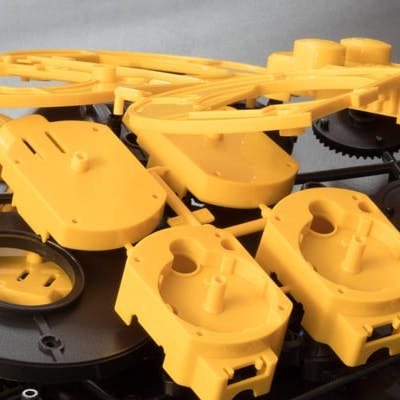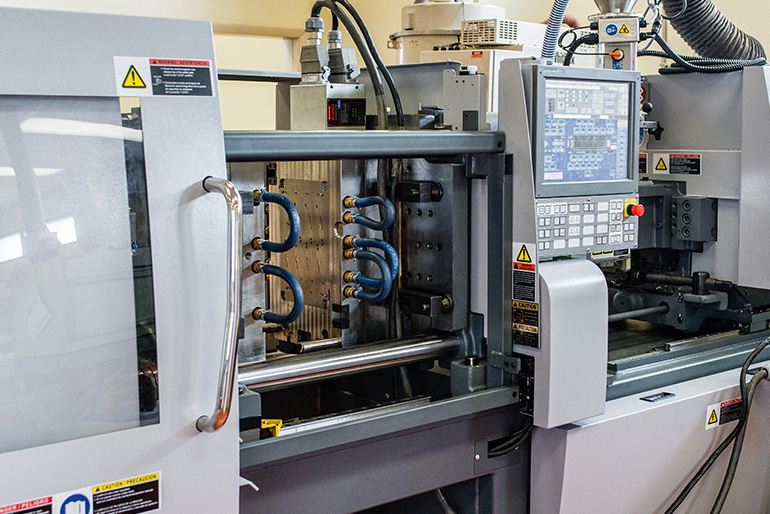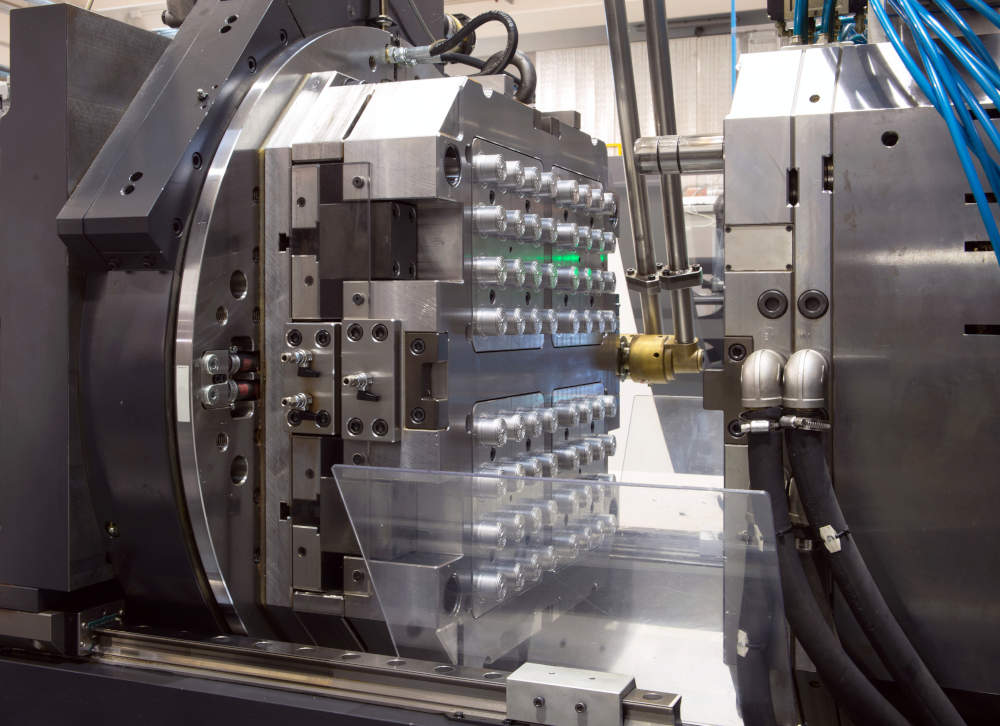Why Plastic Injection Molding Is Vital for Precision and Longevity
Why Plastic Injection Molding Is Vital for Precision and Longevity
Blog Article
Comprehending the Basics of Plastic Injection Molding Processes
Plastic injection molding offers as a cornerstone of modern manufacturing, offering a systematic approach to creating complicated parts with precision. This process not only includes the essential actions of melting and injecting products into mold and mildews yet likewise entails a nuanced understanding of various affecting aspects, such as temperature and stress. As markets increasingly demand performance and top quality, the details of this method end up being a lot more crucial. Exploring these vital components could reveal just how even minor changes can bring about considerable improvements in manufacturing results, questioning concerning the potential for advancement in this well established procedure.
What Is Plastic Injection Molding?
Plastic injection molding is an extensively utilized production procedure that transforms thermosetting and thermoplastic products right into accurate and complicated shapes. This method is preferred for its capability to generate high quantities of identical parts with extraordinary accuracy, making it a vital method in different markets, including automotive, customer items, and clinical gadgets.
The process involves melting the selected plastic product and injecting it right into a mold and mildew under high stress. The mold and mildew, developed to the requirements of the desired component, enables the molten plastic to form as it cools and strengthens. When the product has actually set, the mold is opened, and the completed element is expelled.
Plastic injection molding provides several advantages, consisting of decreased waste, consistency in manufacturing, and the capability to include detailed designs that might be challenging with other making methods. Additionally, it supports a wide array of materials, each giving distinct properties that can be customized for certain applications. As markets remain to introduce, plastic injection molding stays at the forefront, allowing the advancement of sophisticated products that fulfill developing customer demands.
The Injection Molding Refine
The injection molding process is a sophisticated method that involves numerous vital stages to generate top quality plastic parts. Plastic pellets are fed right into a heated barrel where they are thawed into a viscous fluid. This molten plastic is then infused under high stress right into a precision-engineered mold and mildew, which shapes the product right into the wanted kind.
When the mold is filled, the plastic is enabled to cool and solidify, taking the shape of the mold cavity. Air conditioning time is crucial, as it impacts the cycle time and the final properties of the molded component. After adequate cooling, the mold and mildew opens up, and the ended up element is expelled using ejector pins.

Products Utilized in Shot Molding
Various materials can be made use of in the shot molding process, each offering distinct homes that deal with certain applications. The most typically used products consist of thermoplastics, thermosetting plastics, and elastomers.

Thermosetting plastics, like epoxy and phenolic materials, undertake a chemical modification throughout the healing process, leading to a stiff, stringent framework. These products are optimal for applications needing high heat resistance and structural integrity, typically made use of in vehicle components and electric insulators.
Elastomers, consisting of silicone and rubber-based materials, supply flexibility and strength. Their distinct residential or commercial properties make them appropriate for applications that require elasticity, such as gaskets and seals.
In addition, specialty products like bio-based plastics and composites are getting grip for their environmental advantages and boosted efficiency qualities, broadening the range of shot molding applications in numerous markets. Recognizing the properties of these materials is crucial for selecting the suitable type for specific tasks.
Benefits of Injection Molding
Injection molding stands out as a highly effective production procedure that uses many benefits for producing intricate components with precision. One of the most considerable advantages is the capacity to create detailed styles that would certainly be difficult or impossible to attain with other approaches (Plastic Injection Molding). The procedure enables thorough functions and tight resistances, making sure top notch components
Furthermore, shot molding is recognized for its quick production capabilities, making it an optimal selection for high-volume production. As soon as the mold and mildew is developed, parts can be created promptly, lowering lead times and boosting total productivity. This performance not just reduces production costs yet additionally offers an one-upmanship out there.
The convenience of products made use of in shot molding even more enhances its charm. A wide variety of thermoplastics and thermosetting polymers can be utilized, enabling manufacturers to choose products that finest fulfill their details demands, consisting of strength, adaptability, and warm resistance.
Additionally, the procedure reduces waste, as excess material can usually be reused and reused. This sustainability element adds to check over here a decreased environmental influence, making shot molding a responsible production choice. Overall, the benefits of injection molding make it a recommended technique for numerous industries.
Aspects Impacting Item High Quality
While many factors can influence item quality in injection molding, comprehending these aspects is critical for attaining ideal outcomes. Secret aspects consist of product option, processing criteria, and mold design.
Material choice plays a vital role, as various polymers display unique residential or commercial properties that impact flowability, toughness, and thermal security. Inadequate product option can bring about issues such as bending or incomplete filling.
Processing criteria, including temperature level, imp source stress, and cycle time, need to be carefully regulated. Variants in these settings can lead to disparities in part dimensions and surface area coating. Exceedingly high temperatures may trigger destruction of the polymer, while poor stress can result in brief shots.
Mold and mildew layout is equally vital, as it identifies the flow of the molten plastic and the cooling procedure. Poorly developed mold and mildews might result in uneven cooling rates, leading to recurring tensions and dimensional inaccuracies.

Final Thought
In verdict, plastic injection molding acts as a critical manufacturing process that allows the efficient manufacturing of top quality elements. Proficiency of the injection molding procedure, including the understanding of materials and the influence of numerous factors on item top quality, is important for attaining ideal outcomes. The advantages of this method, such as cost-effectiveness and layout versatility, further emphasize its importance across multiple sectors, strengthening its condition as a recommended option for high-volume manufacturing.
Plastic shot molding serves as a foundation of modern manufacturing, providing a my latest blog post systematic method to producing complicated elements with precision.Plastic injection molding supplies numerous advantages, including decreased waste, uniformity in production, and the capability to include intricate designs that might be testing with other producing approaches (Plastic Injection Molding). As industries continue to introduce, plastic injection molding remains at the forefront, allowing the development of sophisticated products that fulfill advancing customer needs
The injection molding procedure is an innovative strategy that involves several key phases to generate top quality plastic components.In final thought, plastic injection molding serves as an essential manufacturing procedure that allows the reliable manufacturing of top notch elements.
Report this page